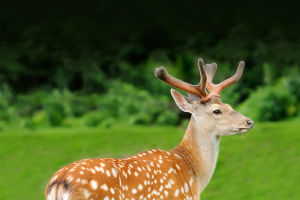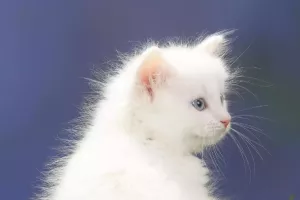Who doesn't love the big, burly white bears of the north? Polar bears—at the top of the food chain and vital to the health of the Arctic marine environment—are important to the cultures and economies of Arctic peoples. Take a look at some interesting facts about polar bears.
1. Why do polar bears have white fur?
Polar bears have white fur so that they can camouflage into their environment. Their coat is so well camouflaged in Arctic environments that it can sometimes pass as a snow drift. Interestingly, the polar bear’s coat has no white pigment; in fact, a polar bear’s skin is black and its hairs are hollow. They have a thick layer of body fat, which keeps them warm while swimming, and a double-layered coat that insulates them from the cold Arctic air.
2. What do polar bears eat?
The polar bear is the most carnivorous member of the bear family, feeding mainly on a diet of ringed seals because they need large amounts of fat to survive. A polar bear’s stomach can hold the food equivalent of 15% to 20% of its own bodyweight, and its digestive system absorbs approximately 84% of the protein and 97% of the fat it consumes.
3. How successful are polar bear hunts?
A common method of hunting by polar bears involves the bear keeping perfectly still by a seal's breathing hole, waiting for hours—or even days—for a seal to pop up for air. Seals are slippery and well designed to escape from polar bears; a polar bear might catch only one or two out of ten seals it hunts, depending on the time of year and other variables.
4. Are polar bears good swimmers?
Polar bears are considered talented swimmers and can sustain a pace of six miles per hour by paddling with their front paws and holding their hind legs flat like a rudder. Their paws are slightly webbed to help them swim. Polar bears are actually classified as marine mammals because they spend most of their lives on the sea ice of the Arctic Ocean.
5. Why do polar bears like to keep clean?
Polar bears like to keep clean because it helps the insulating properties of their fur. Fur that is dirty, matted, and wet does not work as well as an insulator. After feeding, polar bears will usually wash themselves by taking a swim or rolling in the snow. They also roll in the snow to cool off; despite the harsh conditions of their environment, polar bears can be prone to overheating.
6. How big are polar bears when they are born?
Polar bears are only about the size of an adult guinea pig when they are born. Mothers usually give birth to twins, and cubs live with their mothers for about 28 months. Fully grown, males usually measure about eight–nine feet nose to tail, and females about six–seven feet. Their lifespan is about 20–25 years.
7. Where do polar bears live?
Polar bears live in the Arctic, on ice-covered waters. Polar bears rely on sea ice to access the seals that are their primary source of food, as well as to rest and breed. The total polar bear population is divided into 19 units or subpopulations. Sixty percent of the sub-populations are in Canada. There are 22,000-31,000 polar bears in the wild.


